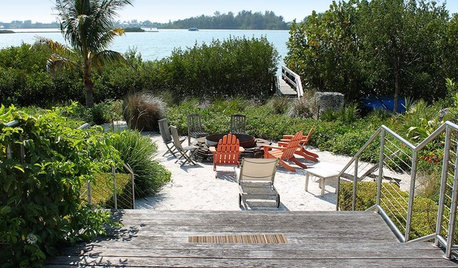Top soil vs Potting soil in quality control
paulsiu
12 years ago
Related Stories

FARM YOUR YARDHow to Get Good Soil for Your Edible Garden
The nutrients in your soil feed the plants that feed you. Here are tips on getting it right — just in time for planting season
Full Story
GARDENING GUIDESHow to Stop Worrying and Start Loving Clay Soil
Clay has many more benefits than you might imagine
Full Story
GARDENING GUIDESHow to Pick a Mulch — and Why Your Soil Wants It
There's more to topdressing than shredded wood. Learn about mulch types, costs and design considerations here
Full Story
GARDENING GUIDES10 Solutions for Soggy Soil
If a too-wet garden is raining on your parade, try these water-loving plants and other ideas for handling all of that H2O
Full Story
CONTAINER GARDENSContainer Gardening Basics: The Dirt on Soil
Learn the types of potting soil available and the best mixes to help your containers thrive
Full Story
GARDENING GUIDESGrow a Beautiful Garden in Alkaline Soil
Got alkaline soil? Learn how to manage it and the many beautiful plants that will thrive in this ‘sweet’ soil
Full Story
GROUND COVERSGround Force: 10 Top Ground Covers for Your Garden
Protect your soil from weeds and drought this summer with a living mulch of ground covers
Full Story
LANDSCAPE DESIGNErosion Control for Your Seaside Garden
Learn how to protect the soil and plants on your shoreline for a beach landscape that lasts
Full Story
SPRING GARDENINGHow to Grow a Rose Garden in Pots
Everything can come up roses, even without a plot of soil in sight. This step-by-step guide to growing roses in containers shows you how
Full Story
CONTAINER GARDENSContainer Garden Basics: How and When to Water Potted Plants
Confused about soil moisture, the best time to water and what watering device to use? This guide can help
Full StoryMore Discussions








Kimmsr
paulsiuOriginal Author
Related Professionals
Deer Park Landscape Architects & Landscape Designers · Elwood Landscape Architects & Landscape Designers · Palm Springs Landscape Architects & Landscape Designers · Pottstown Landscape Contractors · Avocado Heights Landscape Contractors · Cerritos Landscape Contractors · Davidson Landscape Contractors · Oxnard Landscape Contractors · 07920 Landscape Contractors · Shenandoah Landscape Contractors · Albemarle Decks, Patios & Outdoor Enclosures · Billerica Decks, Patios & Outdoor Enclosures · Mebane Decks, Patios & Outdoor Enclosures · Port Saint Lucie Decks, Patios & Outdoor Enclosures · San Diego Decks, Patios & Outdoor Enclosurescheapheap
paulsiuOriginal Author
gardengal48 (PNW Z8/9)
joepyeweed
gardengal48 (PNW Z8/9)
joepyeweed
paulsiuOriginal Author
gargwarb
joepyeweed
LoveUrSoil.john
nil13
nil13
toxcrusadr
nil13
Kimmsr
nil13
toxcrusadr
nil13